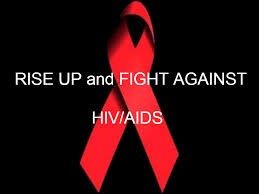
MANILA (Mindanao Examiner / Aug. 28, 2013) – The Trade Union Congress of the Philippines has urged city and municipal mayors, including local legislators, to give more priorities and resources in addressing the alarming growth of HIV-AIDS incidence nationwide particularly the growing trend of men having sex with men.
“The city and municipal mayors’ cooperation and the synergy of local council members are important in controlling the spread of AIDS-HIV among our people especially the Filipino youth nationwide. We, in the workers’ sector, are calling on our chief executives to act quickly by providing funds, crafting city ordinances, and providing facilities that caters essential care and support to infected constituents,” Gerard Seno, Executive Vice President of the Associated Labor Unions-TUCP, said in a statement sent to the regional newspaper Mindanao Examiner.
In a rapid assessment study and analysis results designed for local chief executives released recently by the Philippine National Aids Council (PNAC), the Department of Health (DOH) latest monitoring of the disease showed 1 Filipino is infected by AIDS every 2 hours or 8 new cases every ten days with more men having sex with men. Most of the victims engaged in men to men sex are 15 to 34 years old.
“Access to condoms is a quick and knee jerk, temporary solution. But what we need now is a permanent, lasting and strategic solution,” Seno said.
If this behavior continues, the number of cases this year may surpass the total figure of 3,338 cases reported last year, the highest since 1984.
The TUCP is a member of the PNAC and co-chair of its committee on planning, partnership and networking. The other members of the PNAC are the DOH, Department of Interior and Local Government, Department of Social Welfare and Development and other non-government organizations.
The assessment also emphasized the need for local chief executives and local city and municipal council nationwide to make policy interventions by correcting misconceptions about HIV/AIDS, promote self-risk assessment, provide access to available STI-HIV services.
The study also urged local governments to give premiums to the establishments of more permanent local aids council, facilities for victims and health personnel.
“The study points to the need for mayors and city councils to institutionalize their shared responsibility in minimizing the number of HIV/AIDS victims. By institutionalizing the HIV/AIDS policy intervention in cities and municipalities, the problem is insulated from partisan politics and transforms the approach become more decisive. This is how we think the chronic and growing problem of HIV/AIDS should be addressed,” Seno said.
In June 2013 alone, there were 431 new HIV Ab sero-positive individuals confirmed by the STD/AIDS Cooperative Central Laboratory and reported to the HIV and AIDS registry. This is 46% higher compared to the same period last year in June 2012 with 295 reported cases.
Since 1984 to present, there were 14,025 cases reported. More than half or 51% (6,549) came from Metro Manila. While 13% (1,643) came from Region 4A, 9% from Region 7, 8% (1,077) from Region 3, 6% in Region 11 and 13% are from the rest of the country.
The assessment identified Quezon City (1,539), Manila (1,363) and Makati (712) are the top three cities in 17 cities and municipality in Metro Manila with high incidence of AIDS. They were followed by Mandaluyong (399), Pasig (388), Caloocan (354), Pasay (326), Paranaque (280), Taguig (240), Las Pinas (228), Marikina (207), Muntinlupa and Valenzuela (145), San Juan (65), Malabon (92), Navotas (38), Pateros (16).
Sexual contact remains the prominent mode of transmission (93%), 4% through needle sharing and 1% each through mother to child transmission, blood transfusion and needle prick injury. Of the 13,036 who transmitted the disease through sexual contact, 44% (5,722) of which were done through men to men.
Forty five percent of those surveyed in Metro Manila said condoms were not available. Others said they don’t like to use or their partner objected to using condoms.
